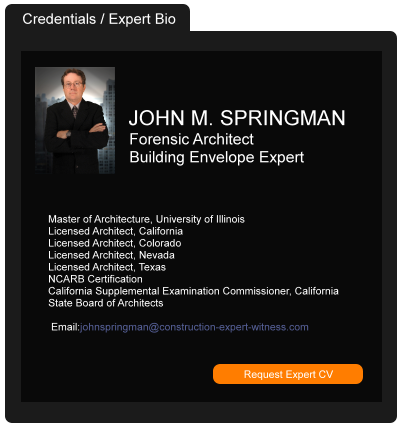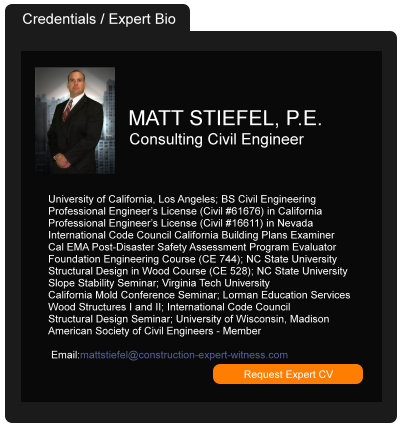Alaska Supreme Court Finds Insurer Owes No Independent Duty to Injured Party
December 14, 2020 —
Tred R. Eyerly - Insurance Law HawaiiAfter the victim incurred injury inflicted by an insured party, the Alaska Supreme Court determined that the insurer owed no duty to the injured party. Martinez v. Government Employees Ins. Co., 2020 Alaska LEXIS 111 (Alaska Sept. 4, 2020).
Joshua Martinez lost control of his truck and crashed into Charles Burnett's cabin. The cabin's heating fuel tank was damaged, and fuel drained onto the property and under the cabin. Burnett further alleged he suffered bodily injuries.
Martinez was insured by GEICO under an auto policy. Two days after the accident, the state Department of Environmental Conservation (DEC) advised GEICO to hire a qualified environmental consultant and crew to clean up the fuel spill. Burnett told GEICO he wanted to do the cleanup himself and offered to do so for $25,000, the approximate amount of the consultant retained by GEICO. DEC did not consider Burnett qualified to handle the cleanup.
Read the court decisionRead the full story...Reprinted courtesy of
Tred R. Eyerly, Damon Key Leong Kupchak HastertMr. Eyerly may be contacted at
te@hawaiilawyer.com
Not So Unambiguous: California Court of Appeal Finds Coverage for Additional Insured
October 11, 2017 —
Malcom Ranger-Murdock - Saxe Doernberger & Vita, P.C.California’s Fourth District Court of Appeal recently determined that manuscript additional insured endorsements (AIEs), which purportedly provided coverage for ongoing operations only, were ambiguous. The court also found the insurer that issued the policies, American Safety Indemnity Co. (American Safety), acted in bad faith due to its systematic efforts to deny coverage to general contractors as additional insureds.
In Pulte Home Corp. v. American Safety Indemnity Co.,1 Pulte Home Corporation (Pulte Home), a general contractor, sued American Safety for failure to defend Pulte Home as an additional insured in connection with two underlying construction defect lawsuits. American Safety contended that it did not have a duty to defend Pulte Home because the loss occurred after the construction project was complete and the applicable AIEs did not provide coverage for completed operations, and/or because the policy’s faulty workmanship exclusions applied. The trial court awarded $1.4 million in compensatory and punitive damages to Pulte Home, and American Safety appealed.
Read the court decisionRead the full story...Reprinted courtesy of
Malcom Ranger-Murdock, Saxe Doernberger & Vita, P.C.Mr. Ranger-Murdock may be contacted at
mrm@sdvlaw.com
When OSHA Cites You
April 22, 2024 —
Michael Metz-Topodas - Construction ExecutiveWith the strong bonds that form among construction project teams, workers looking out for each other helps keep safety foremost in everyone’s mind. But sometimes, even the very best intentions alone can’t prevent an occasional misstep—a forgotten hard hat, a sagging rope line—which can and often does result in an OSHA citation. These regulatory reminders can bring unfortunate consequences: penalties, higher insurance premiums, potential worker injury claims, loss of bidding eligibility, loss of reputation and even public embarrassment, because citations are published on OSHA’s website.
Due to citations’ adverse effects, contractors have incentives to minimize them. They can do this by asserting available defenses, because a citation is only an alleged violation, not a confirmed one. But making defenses available begins well before a citation is issued, well before OSHA arrives to a construction site and well before a violation even occurs. Instead, contractors’ ongoing safety programs should incorporate the necessary measures to preserve OSHA citation defenses in three key areas: lack of employee exposure, lack of employer knowledge and impossibility.
EMPLOYEE EXPOSURE
To sustain a citation against an employer, OSHA must not only identify an applicable standard that the company violated but also show that the violation exposed employees to hazards and risk of injury. Absent evidence of actual exposure, OSHA often makes this showing by asserting that performing job functions necessarily exposes employees to the cited hazard.
Reprinted courtesy of
Michael Metz-Topodas, Construction Executive, a publication of Associated Builders and Contractors. All rights reserved.
Read the court decisionRead the full story...Reprinted courtesy of
Mr. Metz-Topodas may be contacted at
michael.metz-topodas@saul.com
Contractors: A Lesson on Being Friendly
April 06, 2016 —
Garret Murai – California Construction Law BlogI know.
You’re just trying to be friendly.
Don’t.
Particularly when you’re a contractor bidding on a public works project.
Those dinners at swanky restaurants, tickets to The Jersey Boys, and all expense paid trips to the Napa Valley have a way of appearing less “friendly” in hindsight, and more like bribery, or as they say, “pay to play.”
In Sweetwater Union High School District v. Gilbane Building Company, California Court of Appeals for the Fourth District, Case No. D067383 (February 24, 2016), three contractors, Gilbane Building Company (“Gilbane”), The Seville Group, Inc. (“Seville”) and Gilbane/SGI Joint Venture (“Gilbane/SGI”) (collectively “Contractors”) were sued by the Sweetwater Union School District (“District”) to void their contracts with the District and for disgorgement of all monies paid to them under Government Code section 1090 after it was discovered that the Contractors had engaged in a “pay to play” scheme involving several officials of the District.
Read the court decisionRead the full story...Reprinted courtesy of
Garret Murai, Wendel Rosen Black & Dean LLPMr. Murai may be contacted at
gmurai@wendel.com
Is Your Construction Business Feeling the Effects of the Final DBA Rule?
June 04, 2024 —
Nathaniel Peniston - Construction ExecutiveThe Biden administration’s final rule “Updating the Davis-Bacon and Related Acts Regulations” took effect on Oct. 23, 2023. In “the first comprehensive regulatory review in nearly 40 years,” the Department of Labor has returned to the definition of “prevailing wage” it used from 1935 to 1983—before Microsoft released the first Windows operating system.
Construction industry leaders must be aware that this is the most comprehensive review and overhaul of the act in 40 years; with it, the DOL has attempted to modernize its approach to wage creation and fringe benefit allocation. There are more than 50 procedural changes to the act, which means it is very important for contractors to be aware of wage classifications when bidding, performing work on Davis-Bacon Act projects and using applicable fringe dollars for bona fide benefits.
UNDERSTANDING THE CHANGES
Some of the critical adjustments included in the final rule that contractors should be aware of include:
Wage determination changes during a project: Historically, contractors could rely on the wage determinations used to win a project for the life of the project. However, the final rule now requires the contractor to use current wage determinations when a contract is changed or extended. The DOL “proposed this change because—like a new contract—the exercise of an option requires the incorporation of the most current wage determination.”
Reprinted courtesy of
Nathaniel Peniston, Construction Executive, a publication of Associated Builders and Contractors. All rights reserved.
Read the court decisionRead the full story...Reprinted courtesy of
Mr. Peniston may be contacted at
npeniston@fbg.com
Congratulations to San Diego Partner Johnpaul Salem and Senior Associate Scott Hoy for Obtaining a Complete Defense Verdict!
November 13, 2023 —
Dolores Montoya - Bremer Whyte Brown & O'Meara LLPPartner Johnpaul Salem and Senior Associate Scott Hoy just concluded a 4-week trial defending a local renowned hotel in San Diego. Plaintiff alleged premises liability against BWB&O’s client arguing plaintiff was injured while riding in an elevator due to alleged negligent maintenance and inspection. Plaintiff brought in a “hired gun” elevator expert from Missouri and sought $25 million in damages for two fractured ankles, a compound tibia fracture, and lifelong CRPS/PTDS/anxiety. BWB&O argued any injuries sustained were a direct result of Plaintiff’s actions. After a passionate and powerful closing argument by Mr. Salem, attacking the foundation of Plaintiff’s expert’s opinions and presenting vigilance of the hotel in the safety of its guests, the jury unanimously ruled in BWB&O’s client’s favor.
Reprinted courtesy of
Dolores Montoya, Bremer Whyte Brown & O'Meara LLP
Read the full story... Read the court decisionRead the full story...Reprinted courtesy of
Client Alert: Disclosure of Plaintiff’s Status as Undocumented Alien to Prospective Jury Panel Grounds for Mistrial
February 05, 2015 —
R. Bryan Martin, Lawrence S. Zucker II, and Kristian B. Moriarty – Haight Brown & Bonesteel LLPIn Velasquez v. Centrome, Inc. (No. B247080, filed 1/30/2015) the Court of Appeal, Second District, held that a trial judge’s disclosure to the panel of prospective jurors of plaintiff’s status as an undocumented alien was prejudicial and grounds for a new trial.
Plaintiff, Wilfredo Velasquez, brought suit against defendant, Centrome, Inc., alleging personal injuries related to on-the-job exposure to diacetyl, which was purportedly distributed by Centrome.
Prior to trial, numerous motions in limine were filed with the trial court including a motion brought by Plaintiff to preclude Centrome from referring to or making any comments about Mr. Velasquez’s citizenship or immigration status. Plaintiff contended the information was not relevant (as no loss of earnings claim was asserted), and was substantially more prejudicial than probative. Defendant opposed the Motion arguing the information was relevant for the limited purpose of allowing expert testimony about Mr. Velasquez’s inability as an undocumented alien to participate in a lung transplant he claimed was needed. The Court deferred ruling on the motion.
Reprinted courtesy of Haight Brown & Bonesteel LLP attorneys
R. Bryan Martin,
Lawrence S. Zucker II and
Kristian B. Moriarty
Mr. Martin may be contacted at bmartin@hbblaw.com;
Mr. Zucker may be contacted at lzucker@hbblaw.com;
and Mr. Moriarty may be contacted at kmoriarty@hbblaw.com
Read the court decisionRead the full story...Reprinted courtesy of
Are You a Construction Lienor?
November 15, 2017 —
David Adelstein - Florida Construction Legal UpdatesWhen it comes to construction lien rights, not everyone that touches the project is a proper lienor. Forget about timely serving a Notice to Owner or recording a claim of lien, if you are not a proper lienor, it does not matter if you properly perfected your lien rights. If you are not a proper lienor, you have NO lien rights under the law!
Florida Statue s. 713.01(18) defines a lienor as follows:
(18) “Lienor” means a person who is:
(a) A contractor;
(b) A subcontractor;
(c) A sub-subcontractor;
(d) A laborer;
(e) A materialman who contracts with the owner, a contractor, a subcontractor, or a sub-subcontractor; or
(f) A professional lienor under s. 713.03;
and who has a lien or prospective lien upon real property under this part, and includes his or her successor in interest. No other person may have a lien under this part.
Read the court decisionRead the full story...Reprinted courtesy of
David Adelstein, Florida Construction Legal UpdatesMr. Adelstein may be contacted at
Dadelstein@gmail.com


































































